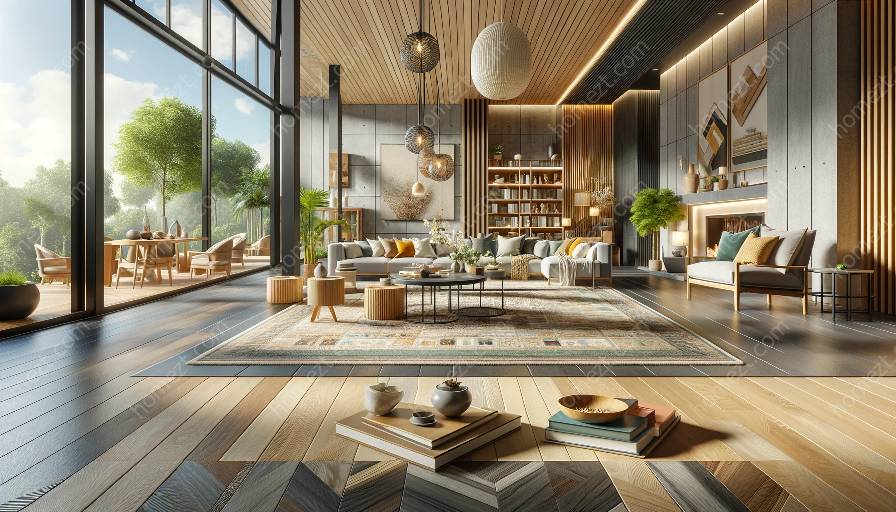In today's design landscape, sustainable flooring has become a key consideration for interior designers and homeowners alike. As the demand for eco-friendly materials continues to grow, the industry has witnessed a surge of innovative flooring options and materials that are not only sustainable but also aesthetically appealing.
Sustainability in Flooring and Interior Design
Integrating sustainable flooring into interior design goes beyond just the visual appeal. It encompasses the use of materials that are sourced and produced in an environmentally responsible manner, leading to a reduced environmental footprint.
From reclaimed wood and bamboo to cork and linoleum, there are several sustainable flooring options that cater to various design preferences and functional needs. These materials not only contribute to a healthier indoor environment but also address the growing concern for sustainability in the built environment.
Eco-Friendly Flooring Options and Materials
1. Reclaimed Wood: One of the most popular choices for sustainable flooring, reclaimed wood offers a unique and authentic appeal. Salvaged from old buildings and structures, reclaimed wood adds character and history to interior spaces while reducing the demand for new timber.
2. Bamboo: Known for its rapid growth and renewability, bamboo flooring has gained prominence in sustainable interior design. With its natural beauty and durability, bamboo is a versatile option that complements various design styles.
3. Cork: Harvested from the bark of cork oak trees, cork flooring is a renewable material that provides excellent thermal and sound insulation. Its soft, cushioned surface makes it a comfortable and eco-friendly choice for residential and commercial spaces.
4. Linoleum: Made from natural materials such as linseed oil, wood flour, and jute, linoleum is a resilient flooring option that offers a wide range of colors and patterns. Its longevity and biodegradability make it a sustainable choice for high-traffic areas.
Enhancing Interior Design and Styling
Aside from their eco-friendly attributes, sustainable flooring options have a significant impact on interior design and styling. They provide a canvas for creativity and expression, allowing designers to integrate natural textures and organic elements into their projects.
When paired with the right furnishings and decor, sustainable flooring can create a harmonious and inviting atmosphere within a space. Whether it's the warmth of reclaimed wood, the modernity of bamboo, or the versatility of cork, each material brings its own aesthetic allure to interior design.
Embracing Sustainable Design Practices
As the shift towards sustainable living and design practices continues to gain momentum, the role of flooring in interior design becomes increasingly critical. Design professionals are embracing the challenge of combining aesthetics with environmental responsibility, leading to a wave of inspiring and innovative flooring solutions.
By prioritizing sustainable flooring options and materials, interior designers can elevate the overall appeal and functionality of spaces while contributing to the larger goal of creating healthier and more sustainable living environments.


























